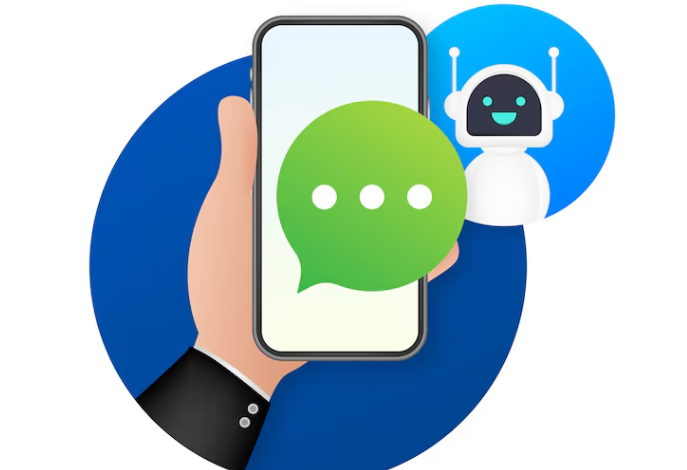WhatsApp Business Chatbot vs Live Agent: Where Should You Invest?

Let’s face it. Customers don’t wait anymore to get their mail.
They expect answers instantly. No queues. No repeats. No “please hold.” If your business isn’t responding fast enough, someone else probably is. That’s where automation creeps into the conversation. Specifically, chatbots.
But here’s the real dilemma. Should you keep investing in human agents? Or hand things off to a WhatsApp Business chatbot?
It’s an honest question. One that doesn’t have a clean answer.
Why Chatbots Are Popping Up Everywhere
You’ve likely noticed it. More brands responding on WhatsApp without… well, actually responding. The reply comes in seconds. And it’s not random. It’s structured. Press 1 for this, press 2 for that.
This is the WhatsApp Business chatbot at work.
And truth be told, it works well especially when the question is simple. “Where’s my order?” “How do I reset my password?” No one wants to type that out to a live person anymore.
For businesses, it’s a relief. These bots handle hundreds of queries without blinking. No shifts, no training costs, no delays. They follow the script, every time.
Live Agents Still Matter—Maybe More Than You Think
But here’s where it gets a bit messy.
Not every question fits neatly into a flowchart. Some customers are frustrated. Others don’t even know what they’re asking. There’s emotion, hesitation, and confusion. A bot might miss that entirely.
A good live agent, on the other hand, can read tone. They can improvise. Say the right thing when the situation calls for it. That’s not something bots are great at—not yet.
And when something goes wrong, people usually want a real person. Not an automated loop.
Let’s Talk Costs—Because They Stack Up Fast
Chatbots sound cheaper. In many cases, they are.
Once set up, they run quietly. There’s the occasional tweak, maybe some training data updates. But overall, you’re not adding headcount. That matters when support volume rises.
Live agents, though? Every new one means more salary, more tools, more supervision. It adds up.
But here’s the catch. If your chatbot frustrates users, they leave. They might not say it. They just stop coming back. And that’s a cost most teams don’t track.
So while bots reduce visible expenses, they can introduce hidden ones.
Some Customers Don’t Mind Bots—Others Do
It’s a generational thing sometimes.
Younger users expect automation. They’ve grown up clicking through menus and typing keywords. As long as they get a result, they don’t care who or what sent it.
Older customers? Not always so comfortable. Especially when the issue is financial or personal.
There’s also the question of tone. Bots often sound neutral, or worse—cold. They don’t know when to break the rules. And that’s a problem when flexibility is needed.
See also: Exploring the Role of a Custom Smartphone Manufacturer in Modern Tech
Where Each Option Makes Sense
Let’s break it down.
A chatbot is excellent for:
- FAQs
- Product lists
- Status updates
- Booking confirmations
- Basic onboarding steps
A live agent fits better when:
- There’s a complaint
- A refund is requested
- Emotions run high
- Clarification is needed
- Sales advice is requested
If you’ve got high volume and a lot of repetition, it makes sense to introduce automation first. Let the bot handle what it can. But always have an exit door—customers should never feel trapped in a script.
That’s where agent routing logic becomes critical. Bots need to know when to pass the baton. And to whom.
But Sometimes Bots Go Too Far
Here’s something that actually happened.
A user contacted support to report a double charge. The bot replied with a shipping FAQ. No “sorry,” no redirection, just a loop. After four attempts, the user gave up.
That’s not a tech failure. It’s a planning failure.
Bots can’t replace humans entirely. And when businesses pretend they can, it usually backfires.
That’s why message session handover matters. It’s what allows the conversation to move from bot to agent without starting over. No repeated info. No frustration.
When Humans Slip Too
To be fair, not all agents deliver a great experience.
Slow replies, inconsistent answers, or unclear communication—it happens. And it hurts trust. Customers remember when a person dropped the ball, not just when a bot did.
This isn’t a case of bots good, humans bad. Or vice versa. It’s more about managing both better.
So, Where Should You Put Your Budget?
If your support team is drowning in the same 10 questions every day, a chatbot makes sense.
But if your queries are complex, emotional, or vary a lot, don’t rush to automate everything.
If you’re somewhere in the middle—and most are—build both. Use bots to filter. Let agents take over when things get complicated.
Test. Watch. Adjust.
The goal isn’t to replace humans or upgrade bots endlessly. It’s to make sure customers get answers without friction.
And if you get that right, it almost doesn’t matter who they talk to.




